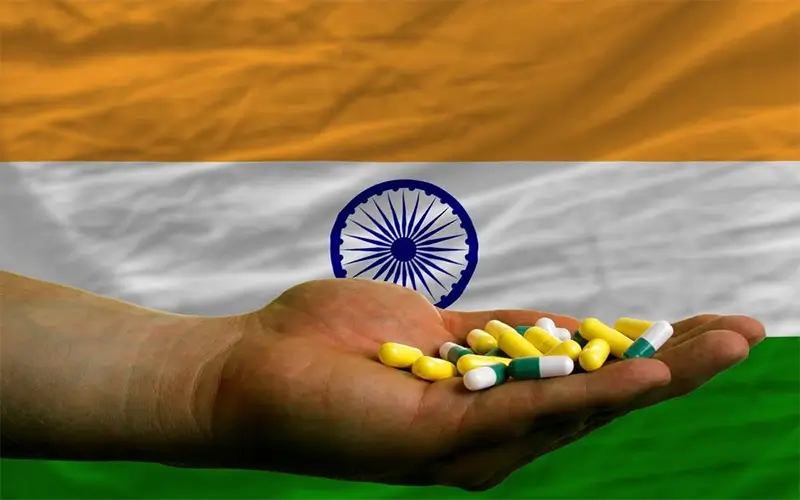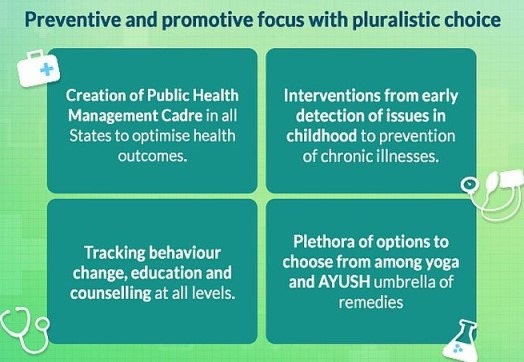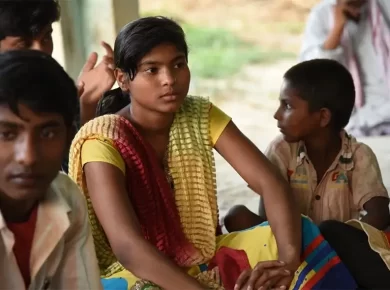Healthcare System in India & National Health Policy
Healthcare System in India
“Lancet Report on healthcare – India is the poorest performer in BRICS nations”
Challenges faced by Indian Healthcare System
- A weak primary health care sector + care provided in these facilities is also not up to the mark.
- Unequally distributed skilled human resources & shortfall of specialists across country
- Services inequitably distributed – Urban areas command 73% of the public hospital beds, even when 69% of India’s population resides in rural areas
- Large unregulated private sector – Private practitioners have become first point of contact in both rural & urban areas – concern lies with Unethical and irrational practices widespread among private hospitals
- Low public spending on health – Public health expenditure as a proportion of GDP remains low i.e. 1.15 %
- Fragmented health information systems – weak systems for collecting data + non-inclusion of the private sector in data gathering
- Poor Health Cover & high out of pocket expenditure – 80 % no health insurance
- Weak governance and accountability owing to corruption in health care
There is a greater need of radical restructuring of the healthcare system in India to address challenges including weak primary healthcare and dismally low public spending on health – to assure health for all Indians by 2022.
India needs to adopt an integrated national health-care system built around a strong public primary care system with a clearly articulated supportive role for the private and indigenous sectors.
National Health Policy, 2017
- Strengthening role of public sector by increasing public health spending to 5% of GDP by 2025 from current 1.15%
- Recognizes need for state intervention to control NCDs as they are reason for more than 60% death in India
- Collaborating & regulating the private sector as over 2/3rd of services are provided by it
- Seeks to invest in preventive healthcare viz.
- early screening and diagnosis have been made a public responsibility
- advocates 2/3rd or more allocation of health budget for Primary Health Care
- affordable quality healthcare for all
- Intersectoral approach involving various ministries
- Prioritizes addressing primary health care needs of urban population with special focus on poors
- Mainstreaming AYUSH systems inline with allopathic professionals
Concerns
- It leaves too much to the states on maintaining standards
- Would require more human resources and funds
- Health care target spending still Much lower than even other developing countries’ spending on health
- It does not speak about social determinants of health
- Various progressive measures under Draft NHP 2015 such as Right to Health and imposing health cess have been ignored
Thus, to achieve SDG on health, i.e., health and well-being to all by 2030, there would be need for greater and stronger Centre-state coordination and commitment for effective implementation.
✅ 10 Key Points on Healthcare System in India & National Health Policy:
-
Structure of Healthcare in India:
-
A three-tier system: Primary (PHCs & Sub-centers), Secondary (CHCs & District Hospitals), and Tertiary (Specialized Hospitals).
-
-
Public vs Private Healthcare:
-
Public sector provides low-cost healthcare but is often underfunded.
-
Private sector is dominant in urban areas but is expensive and profit-driven.
-
-
Challenges in Indian Healthcare:
-
Inadequate infrastructure, rural-urban disparity, shortage of healthcare professionals, and low public spending on health (~1.3% of GDP).
-
-
Burden of Diseases:
-
India faces a dual burden of communicable and non-communicable diseases (NCDs), along with emerging lifestyle diseases.
-
-
Out-of-Pocket Expenditure (OOPE):
-
High OOPE pushes millions into poverty due to healthcare expenses.
-
-
National Health Policy, 2017 Goals:
-
Achieve Universal Health Coverage (UHC).
-
Increase government spending on health to 2.5% of GDP by 2025.
-
-
Key Focus Areas of NHP 2017:
-
Strengthen primary healthcare.
-
Promote preventive, promotive, and curative care.
-
Digital health and e-health initiatives.
-
Public-private partnerships.
-
-
Ayushman Bharat Scheme:
-
Launched under NHP 2017 to provide health insurance coverage and establish Health and Wellness Centers (HWCs) for comprehensive primary care.
-
-
Initiatives for Maternal and Child Health:
-
Mission Indradhanush, Janani Suraksha Yojana, and POSHAN Abhiyaan for improving MCH indicators.
-
-
Way Forward:
-
Enhance healthcare financing.
-
Focus on quality and affordable healthcare.
-
Strengthen preventive care and health literacy.
-
Promote equity and address social determinants of health.
-
For more updates, explore the Social Issues. Feel free to share your thoughts and comments.
If you’re passionate about building a successful blogging website, check out this helpful guide at Coding Tag – How to Start a Successful Blog. It offers practical steps and expert tips to kickstart your blogging journey!








1 comment
very good effort